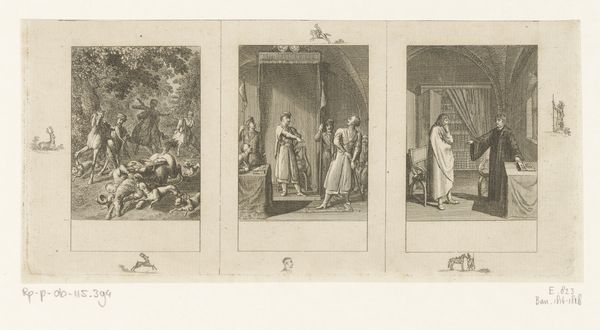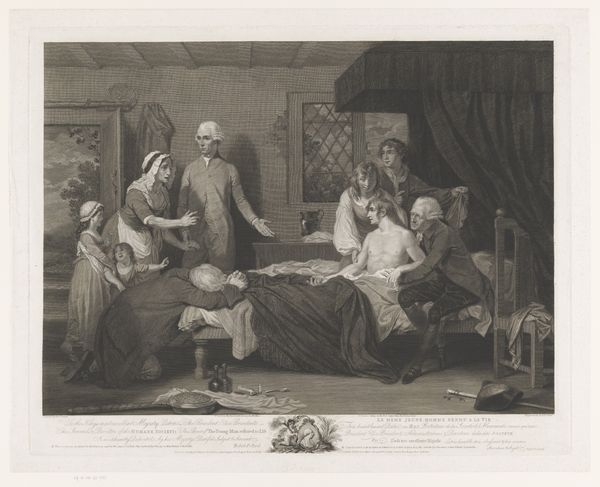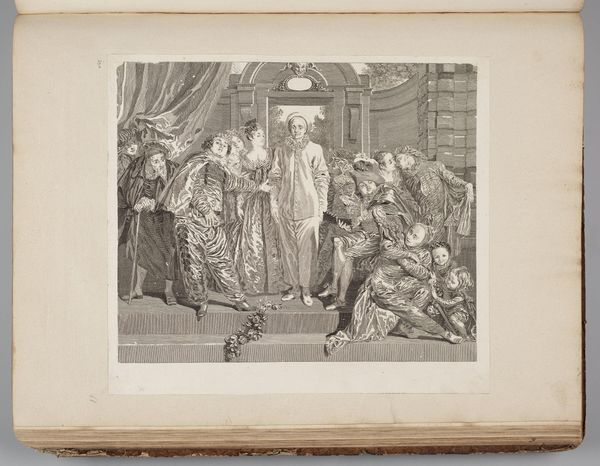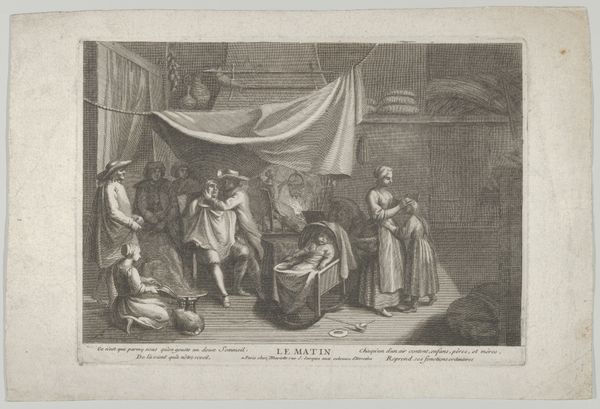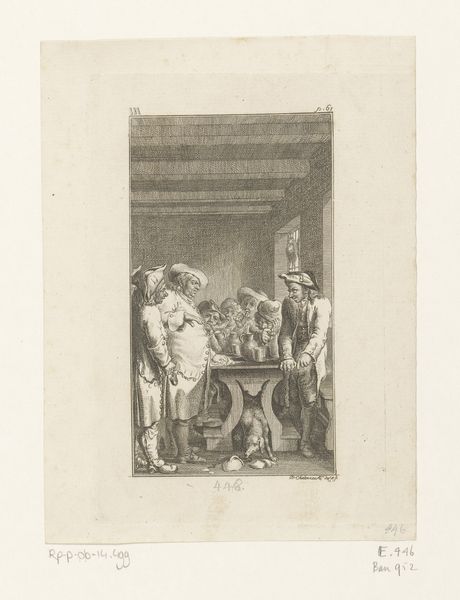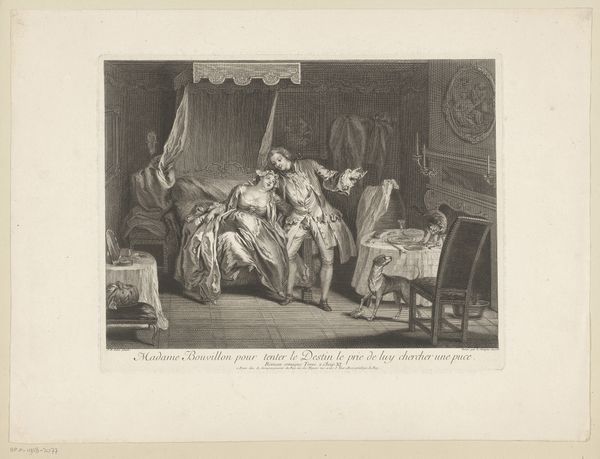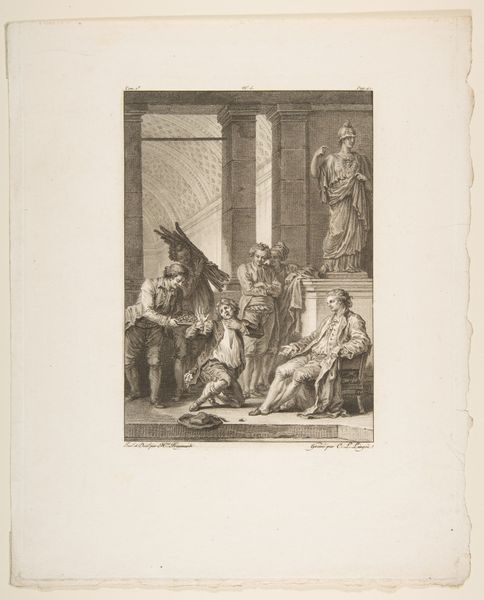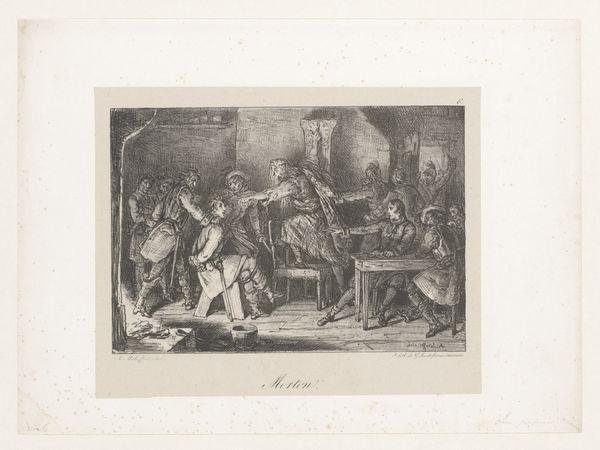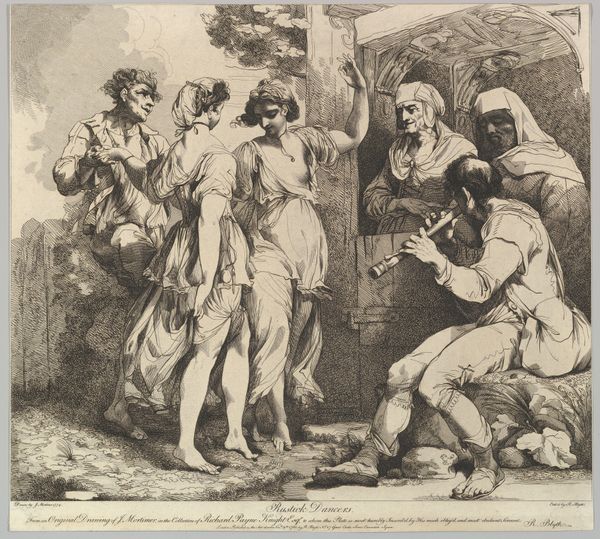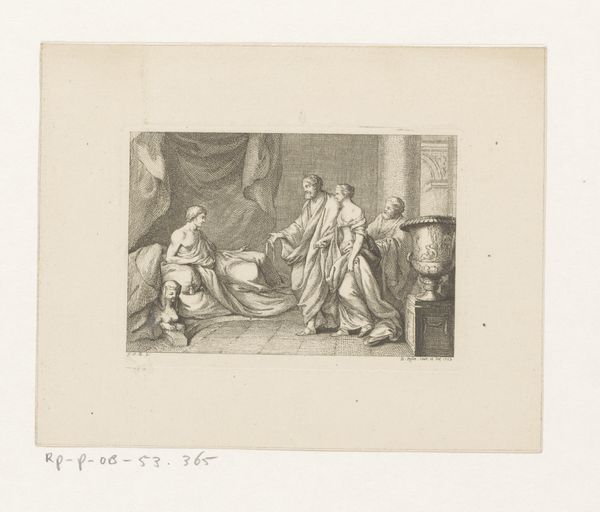
Dimensions: sheet: 19 13/16 x 23 7/8 in. (50.3 x 60.7 cm) image: 14 x 18 1/4 in. (35.5 x 46.3 cm)
Copyright: Public Domain
Curator: Here we have Jean-Honoré Fragonard’s etching and engraving, "L'Armoire," created in 1778. Currently, it resides at the Metropolitan Museum of Art. Editor: It’s remarkably light and quick, almost as if the artist caught a fleeting, slightly awkward moment. I'm immediately struck by the contrast of the shadowy interior with the brightness emanating from that open doorway. Curator: Yes, the subject certainly suggests a moment of disrupted privacy, perhaps a bit of societal satire through the ages, given the placement of the man in the closet. The closet door acts as a threshold between public respectability and hidden indiscretion. The dog barking introduces noise in an otherwise seemingly staged scene of silence. Editor: Let's consider the material production here. Etching and engraving were relatively accessible printmaking techniques, allowing for the wider distribution of images, practically multiplying these narratives. Consider the paper too – most likely handmade, hinting at specific workshops and the skilled labor involved in preparing the very ground on which this image unfolds. It brings it back to the economy that made artmaking possible. Curator: I am also quite drawn to the recurring wardrobe motif. In dreams, the wardrobe could symbolize the gateway to one's secrets, a concealed identity or hidden aspects of the self, and to our potential for exploration, a concept prevalent in this period’s philosophies. Editor: Indeed. And even further than just the individual—I am interested in how it serves the elite consumers of the late 18th century as decor and a method of social display, even of political or artistic persuasion. Consider all the hands and tools it passed through from artist, workshop assistant, tradesman… Curator: In its time and ours, the artwork has acted as a vessel and has been handed down from many perspectives. We too now share our impressions from that vantage point, not as passive viewers. Editor: Yes, what began as simple observation turned to considerations of context, society, class, material production... interesting indeed!
Comments
No comments
Be the first to comment and join the conversation on the ultimate creative platform.
